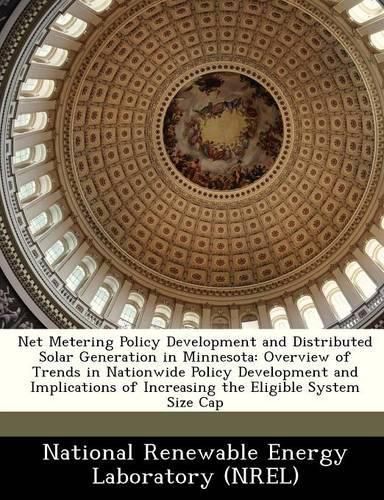Readings Newsletter
Become a Readings Member to make your shopping experience even easier.
Sign in or sign up for free!
You’re not far away from qualifying for FREE standard shipping within Australia
You’ve qualified for FREE standard shipping within Australia
The cart is loading…






The goal of the Minnesota net metering policy is to give the maximum possible encouragement to distributed generation assets, especially solar electric systems (MN 2008). However, according to a published set of best practices (NNEC 2008) that prioritize the maximum development of solar markets within states, the Minnesota policy does not incorporate many of the important best practices that may help other states transform their solar energy markets and increase the amount of grid-connected distributed solar generation assets. Reasons cited include the low system size limit of 40kW (the best practices document recommends a 2 MW limit) and a lack of language protecting generators from additional utility fees. This study was conducted to compare Minnesota’s policies to national best practices. It provides an overview of the current Minnesota policy in the context of these best practices and other jurisdictions’ net metering policies, as well as a qualitative assessment of the impacts of raising the system size cap within the policy based on the experiences of other states.
$9.00 standard shipping within Australia
FREE standard shipping within Australia for orders over $100.00
Express & International shipping calculated at checkout
The goal of the Minnesota net metering policy is to give the maximum possible encouragement to distributed generation assets, especially solar electric systems (MN 2008). However, according to a published set of best practices (NNEC 2008) that prioritize the maximum development of solar markets within states, the Minnesota policy does not incorporate many of the important best practices that may help other states transform their solar energy markets and increase the amount of grid-connected distributed solar generation assets. Reasons cited include the low system size limit of 40kW (the best practices document recommends a 2 MW limit) and a lack of language protecting generators from additional utility fees. This study was conducted to compare Minnesota’s policies to national best practices. It provides an overview of the current Minnesota policy in the context of these best practices and other jurisdictions’ net metering policies, as well as a qualitative assessment of the impacts of raising the system size cap within the policy based on the experiences of other states.